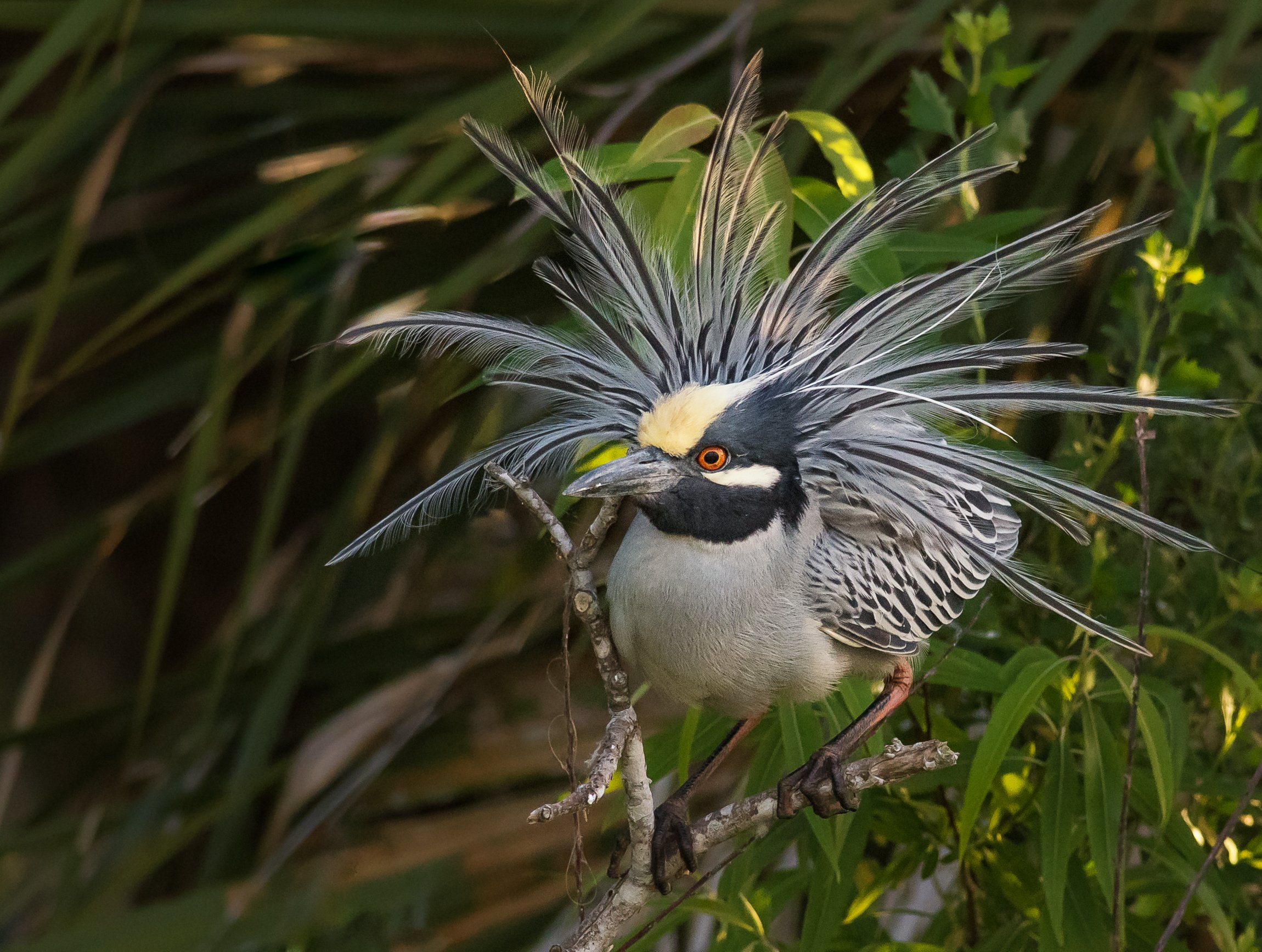Photo: Yellow-crowned Night Heron, Barbara Saffir/Audubon Photography Awards
Connie Ericson
The bird that sent me to the store for my first pair of binoculars and a field guide is the Yellow-crowned Night Heron. I lived in Houston and would take my cool-down walk after a run along the oak- and pine-shaded entry to the Rice University campus. One day I spotted large, brown-speckled birds with huge beaks and big yellow-orange eyes hunkered down under the azalea bushes that also lined the entry. Then I spotted some big, gray, punk-looking birds in the trees. New binoculars and field guide in hand, I figured out what the birds were. They had a rookery on the campus, which is across the street from Houston’s Hermann Park, a good source of food. This was over 30 years ago, and I was hooked.
Yellow-crowned Night Heron, Jerry amEnde/Audubon Photography Awards
I wish I could say that time has made me an expert birdwatcher, but that is not the case. Although I have loved watching birds since those herons first caught my attention, I’m pretty lazy. I don’t study and I don’t keep a list, although I have vivid memories of some first-time sightings: a Rose-breasted Grosbeak in a city park on Galveston Island, a Vermillion Flycatcher at Brazos Bend State Park, a Green Jay at a highway rest stop on the way to Brownsville, an American Bittern crossing the road at Anahuac National Wildlife Refuge (and stopping to make itself look like a reed in the middle of the road), and a pair of American Redstarts in Smith Woods on High Island. I also remember a frustrating 45 minutes at Anahuac struggling with my field guide to identify a female Red-winged Blackbird. I called it the “bad attitude brown bird.”
I do some foreign travel and marvel at the diversity of species, but most of my bird-watching is here in northern Virginia, my home now for over 20 years, where I can observe the changing population throughout the year. And much of the fun of birdwatching for me is seeing familiar birds in action. I have enjoyed seeing Pileated Woodpeckers from my back yard excavating a nest hole and confronting other birds investigating the inviting cavity; day-old Wood Ducks piling out of a nest box at Huntley Meadows Park; a Red-shouldered Hawk apparently stealing a branch from another bird’s nest; a Hermit Thrush foot-trembling at Burke Lake; and a Great-crested Flycatcher taking down a House Sparrow in my backyard, probably following a nest hole incursion by the sparrow. In recent years I have been able to watch Barred Owls and Common Ravens raising young in nests along the W&OD Trail in Arlington, and in the past week I spotted my “bad attitude brown bird” on a nest at Huntley Meadows.
Yellow-crowned Night Heron, Georgia Wilson/Audubon Photography Awards
I appreciate the opportunities ASNV provides me to learn more about birds through its classes and to lobby for birds and the environment through its advocacy committee. Just this past year I started editing ASNV’s Potomac Flier, and I have learned a lot from the talented writers who have contributed articles. All of this is by way of saying that you don’t have to be a scientist or expert to help ASNV help the birds. Everyone, even a lazy birdwatcher, can make a contribution. I hope you join us.



